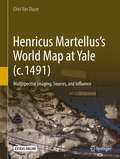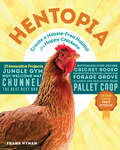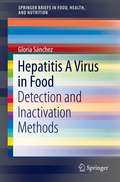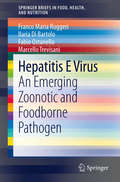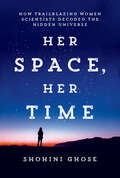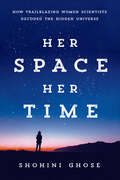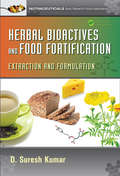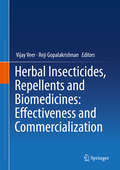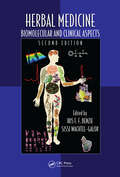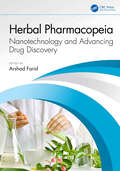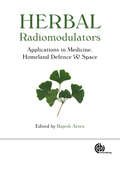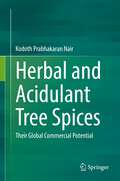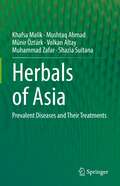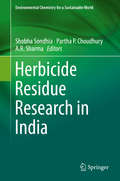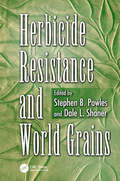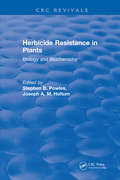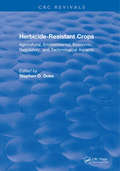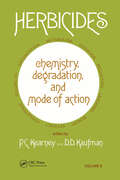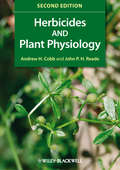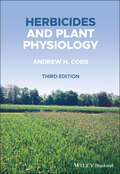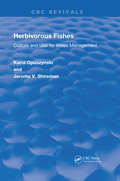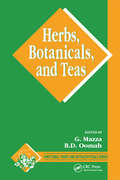- Table View
- List View
Henricus Martellus’s World Map at Yale: Multispectral Imaging, Sources, and Influence (c. #1491)
by Chet Van DuzerThis book presents groundbreaking new research on a fifteenth-century world map by Henricus Martellus, c. 1491, now at Yale. The importance of the map had long been suspected, but it was essentially unstudiable because the texts on it had faded to illegibility. Multispectral imaging of the map, performed with NEH support in 2014, rendered its texts legible for the first time, leading to renewed study of the map by the author. This volume provides transcriptions, translations, and commentary on the Latin texts on the map, particularly their sources, as well as the place names in several regions. This leads to a demonstration of a very close relationship between the Martellus map and Martin Waldseemüller’s famous map of 1507. One of the most exciting discoveries on the map is in the hinterlands of southern Africa. The information there comes from African sources; the map is thus a unique and supremely important document regarding African cartography in the fifteenth century. This book is essential reading for digital humanitarians and historians of cartography.
Henry Ford: The Car Man
by Carin T. FordA simple biography of the man who revolutionized American industry with his assembly-line production of automobiles.
Hentopia: Create a Hassle-Free Habitat for Happy Chickens; 21 Innovative Projects
by Frank HymanMore eggs, less work! And more enjoyment for both the chickens and their keeper! That’s the promise of Frank Hyman’s Hentopia. From the Vending Machine Feeder to the Refilling Rainwaterer, Hyman’s innovative building projects are designed to save time and money while keeping chickens safe, healthy, clean, and well fed. Featuring easy-to-follow instructions and colorful photos, the 21 projects for the chicken yard range from creative doorways, nest boxes, fencing, and roosts to a predator-proof pen, a “Chunnel” chicken run, and a sturdy but inexpensive coop made from wooden pallets. With a lively, humorous voice, Hyman generously shares his expert advice on all aspects of chicken-keeping. Requiring minimal previous carpentry experience and using many salvaged or found materials, Hentopiais within reach of every aspiring chicken keeper. This publication conforms to the EPUB Accessibility specification at WCAG 2.0 Level AA.
Hepatitis A Virus in Food
by Glòria SánchezHepatitis A virus (HAV) is responsible for around half of the total number of hepatitis infections diagnosed worldwide. HAV infection is mainly propagated via the fecal-oral route, and as a consequence of globalization, transnational outbreaks of foodborne infections are reported with increasing frequency. Therefore, in this review, state-of-the-art information on the molecular procedures for HAV detection in food, and the efficacy of common food manufacturing processes are compiled. The purpose of this Brief is to consolidate basic information on various aspects of HAV and to provide a guideline for its prevention and control across the food supply chain from pre-harvest to manufacturing.
Hepatitis E Virus
by Fabio Ostanello Franco Maria Ruggeri Ilaria Di Bartolo Marcello TrevisaniHepatitis E (HEV) is a viral infectious disease that infects humans and domestic, wild, and synanthropic animals alike. In developing countries, the disease often presents as an epidemic, transmitted primarily through the fecal-oral route. In recent years, sporadic cases have also been documented in industrial countries, including Europe. The identification and characterization of animal strains of HEV from pigs, wild boar, and deer, and the demonstrated ability of cross-species infection by these animal strains raise potential public health concerns for foodborne and zoonotic transmission of the virus. This Brief will provide a thorough overview of HEV. It will discuss the epidemiology and pathogenesis of the virus in both humans and animals, review detection methods, and provide methods for its control and prevention.
Her Space, Her Time: How Trailblazing Women Scientists Decoded the Hidden Universe
by Shohini GhoseAn exciting new title in the vein of Hidden Figures, which tells the inspiring stories of long-overlooked women physicists and astronomers who discovered the fundamental rules of the universe and reshaped the rules of society.Women physicists and astronomers from around the world have transformed science and society, but the critical roles they played in their fields are not always well-sung. Her Space, Her Time, authored by award-winning quantum physicist Shohini Ghose, brings together the stories of these remarkable women to celebrate their indelible scientific contributions. In each chapter of the book, Ghose explores a scientific topic and explains how the women featured in that chapter revolutionized that area of physics and astronomy. In doing so, she also addresses particular aspects of women&’s experiences in physics and astronomy: in the chapter on time, for instance, we learn of Henrietta Leavitt and Margaret Burbidge, who helped discover the big bang and the cosmic calendar; in the chapter on space exploration, we learn of Anigaduwagi (Cherokee) aerospace scientist Mary Golda Ross, who helped make the Moon landings possible; and in the chapter on subatomic particles, we learn of Marietta Blau, Hertha Wambacher, and Bibha Chowdhuri, who contributed to the discovery of the building blocks of the universe, and, in doing so, played a crucial role in determining who gets to do physics today.Engaging, accessible, and timely, Her Space, Her Time is a collective story of scientific innovation, inspirational leadership, and overcoming invisibility that will leave a lasting impression on any reader curious about the rule-breakers and trendsetters who illuminated our understanding of the universe.Some of the featured women scientists in the book Williamina FlemingAnnie Jump CannonCecilia Payne-GaposchkinAntonia MauryHenrietta LeavittMargaret BurbidgeMary Golda RossDilhan EryurtClaudia AlexanderJoyce NeighborsNavajo women of Shiprock Harriet BrooksMarie CurieLise MeitnerMarietta BlauHertha WambacherBibha ChowdhuriWu Chien-ShiungWomen of the Manhattan ProjectVera Rubin
Her Space, Her Time: How Trailblazing Women Scientists Decoded the Hidden Universe
by Shohini GhoseOne of Canada's leading physicists celebrates the many, groundbreaking women scientists who came before her—unsung explorers of the cosmos who both discovered the fundamental rules of the universe and challenged social rules, yet whose names remain largely unknown to us.Her Space, Her Time shares the stories of women in physics and astronomy whose work expanded scientific understanding yet whose accomplishments are often overlooked—creating a thrilling account of scientific discovery, inspirational leadership and persistence in the face of overwhelming challenges. In shaping her narrative around the science that fascinated them and the social context in which they worked, award-winning quantum physicist Shohini Ghose champions these remarkable women&’s contributions, which loom even larger given the misogyny and discrimination they faced. Ghose's canvas stretches from the 19th century to the present and includes many women whose work led to Nobel Prizes that were ultimately awarded to men. Among this list of impressive scientists: Henrietta Leavitt and Margaret Burbidge, who helped discover the big bang and the cosmic calendar; Anigaduwagi (Cherokee) aerospace scientist Mary Golda Ross, who helped make the Moon landings possible; atom splitter Lise Meitner; Bibha Chowdhuri, who discovered two fundamental particles; and Harriet Brooks—a Canadian physicist whose impact on radioactivity research was compared to Marie Curie&’s, but who felt that marriage, not science, was the choice she had to make. Engaging and inspirational, Her Space, Her Time is threaded through with Ghose's own experiences in science—women in STEM still face the same kind of challenges her subjects encountered—and driven by the imperative to make the invisible visible, ensuring that the names of these women who pursued science against all odds will never be forgotten.
Herbal Bioactives and Food Fortification: Extraction and Formulation (Nutraceuticals Ser. #4)
by D. Suresh KumarRecent major shifts in global health care management policy have been instrumental in renewing interest in herbal medicine. However, literature on the development of products from herbs is often scattered and narrow in scope. Herbal Bioactives and Food Fortification: Extraction and Formulation provides information on all aspects of the extraction o
Herbal Insecticides, Repellents and Biomedicines: Effectiveness and Commercialization
by Vijay Veer Reji GopalakrishnanThis book looks closely at herbal product development and commercialisation. In spite of an ever-growing demand, there is a dearth of safe and effective herbal products that meet consumers' expectations. Therefore, this book takes it upon itself to elaborate on the development process of herbal insecticides, repellents and biomedicines from a commercialisation point of view. The introductory chapters deal with the various strategies for disease vector control and provide an overview of herbal biomedicines. The subsequent chapter describes plants with mosquito larvicidal activity, including a comprehensive list of lethal concentrations against different mosquito species. The chapter on Himalayan plants discusses potential botanical insecticide sources and their chemical constituents before delving into the topic of natural insecticides of microbial origin and their efficacy against mosquitoes. Plant-derived insecticides belonging to different chemical classes and the extraction, purification and characterisation of bioactive compounds are illustrated, as well. The recent technological advances in the formulation of microbial, biochemical and botanical insecticides are also reviewed. Three chapters focus on important medicinal plants useful for treating human ailments, with special reference to the traditional healing practices of northeastern India. This is followed by a chapter on the production, use and safety of biopharmaceuticals and edible, plant-based vaccines. The intellectual property issues related to herbal products in India including patents, trademarks, geographical indications, trade secrets and traditional knowledge resources are plainly examined. The book ends with a chapter on the herbal product registration process in India, wherein the data requirements for registration, clinical efficacy trials, toxicity studies, quality control, packaging and labelling are clearly explained. In conclusion, this book is a step-by-step guide for the development of safe, effective and commercially viable herbal insecticides, repellents and biomedicines.
Herbal Medicine: Biomolecular and Clinical Aspects, Second Edition (Oxidative Stress and Disease)
by Iris F. F. Benzie Sissi Wachtel-GalorThe global popularity of herbal supplements and the promise they hold in treating various disease states has caused an unprecedented interest in understanding the molecular basis of the biological activity of traditional remedies. Herbal Medicine: Biomolecular and Clinical Aspects focuses on presenting current scientific evidence of biomolecular ef
Herbal Nutraceuticals: Products and Processes
by Santosh Kumar Upadhyay Sudhir Pratap SinghHolistic approach to the herbal aspects of nutraceuticals and their implementation in the health and agriculture sectors Herbal Nutraceuticals: Products and Processes delivers comprehensive coverage of the herbal aspects of nutraceuticals along with their many applications in the health and agriculture sectors. The book begins with an overview of plant-based nutraceuticals and the role of plant biotechnology in nutraceutical production. Each chapter covers a unique topic related to nutraceuticals and the positive and negative implications associated with each substance discussed. The text concludes by addressing safety concerns associated with microalgal nutraceuticals and discussing toxicity evaluation of nutraceuticals overall. Written by two academics with significant experience in the field, Herbal Nutraceuticals: Products and Processes includes information on: Significance of nutraceuticals in modern health maintenance and disease prevention, and applications of spices in nutraceuticals Antioxidant properties and anti-ageing potential of food plants, beverages such as herbal wine, and nutraceuticals Nutraceuticals with anti-diabetic, anti-inflammatory, and anti-carcinogenic potentials, and sources, medicinal properties, and applications of carotenoids in food and the nutraceutical industry Nutraceuticals in legumes, herbal beverages, edible oils, conventional and nonconventional fruits, staple food crops, and pseudocereals Herbal Nutraceuticals: Products and Processes is an essential up-to-date reference on the subject for academics and researchers, as well as professionals and research institutions involved in agri-biotech product development.
Herbal Pharmacopeia: Nanotechnology and Advancing Drug Discovery
by Arshad FaridThis book comprehensively explores the intersection between traditional herbal medicine and cutting-edge nanotechnology. The chapters introduce modern techniques used in herbal extraction and analysis. The principles of drug discovery from plants are discussed, with a focus on the identification and development of bioactive compounds that have therapeutic potential. It discusses the pharmacological properties, biotechnological approaches in drug development, and challenges in the formulation and standardization of herbal medicines. Emerging trends and applications of nanotechnology in herbal pharmacotherapy, such as nanoparticle synthesis, enhanced bioavailability using nanocarriers, safety assessments, novel and targeted delivery systems, and regulatory considerations, are thoroughly discussed. Additionally, it includes a comparative analysis of traditional and nano-formulated approaches and their implementation in clinical settings. Towards the end, the book reviews the regulatory considerations for herbal products and future perspectives in herbal pharmacopeia. This book is intended for researchers, clinicians, and professionals in herbal medicine, pharmacology, and nanotechnology.
Herbal Radiomodulators: Applications in Medicine, Homeland Defence and Space
by Rajesh AroraThis book discusses the potential of radiation countermeasure agents and radiosensitizers of herbal origin, their multifaceted mode of action, specifically the use of the former in a nuclear theatre of operations, rescue operations and deep space missions in addition to their application during radiotherapy.
Herbal and Acidulant Tree Spices: Their Global Commercial Potential
by Kodoth Prabhakaran NairThis book discusses leafy spices or herbs known as “aromatic herbs”, which, apart from being used in culinary art for flavoring of foods and beverages, are also known to possess antiseptic, anti-oxidant and other medicinal properties, in addition to many nutraceutical and cosmetic properties. Of the numerous herbs twelve of the commercially important herbs are imported into 4 major European markets, namely, France, Germany, United Kingdom and The Netherlands to the tune of 12000 to 13000 tonnes per annum. This book discusses these leafy herbs and their tremendous commercial potential in international trade. The book offers a comprehensive insight into commercial herbs, with an objective of enhancing their yield, and provides a platform for further research into the global trade potential.
Herbals of Asia: Prevalent Diseases and Their Treatments
by Mushtaq Ahmad Muhammad Zafar Münir Öztürk Volkan Altay Shazia Sultana Khafsa MalikMedicinal flora plays an important role in health care systems across the world. Out of the half million flowering plants, around 50.000 species are valued for their therapeutic properties. During the last few decades, 20% of the world’s population used plants and/or their derived products as a source of medicine. WHO stated that 80% population around the globe, specifically the rural communities, depend on medicinal plants for their basic healthcare needs. To this end, plant-based phytochemicals are known to have hepato-protective, anti-carcinogenic, anti-allergic, anti-inflammatory, antimicrobial, antioxidant actions. This book is a guide to ~280 plant species of medicinal flora that demonstrates global relevance. Our goal is to share local knowledge about phytomedicines to a worldwide audience. It is an illustrated reference that documents and preserves the existing knowledge on these plant taxa, with a social and cultural (ethnobotanical) emphasis. This book also provides comprehensive and useful information about traditional uses of medicinal plants by the local communities for the treatment of various prevalent diseases. It contains comprehensive descriptions of each species including family, synonyms, English name, distribution, altitude, habitat, morphological description, life form, part used, mode of utilization, diseases category, recipes, other medicinal uses, phytochemical activity and toxicity.
Herbert Fröhlich
by G. J. HylandThis biography provides a stimulating and coherent blend of scientific and personal narratives describing the many achievements of the theoretical physicist Herbert Fr#65533;hlich. For more than half a century, Fr#65533;hlich was an internationally renowned and much respected figure who exerted a decisive influence, often as a 'man ahead of his time', in fields as diverse as meson theory and biology. Although best known for his contributions to the theory of dielectrics and superconductivity, he worked in many other fields, his most important legacy being the pioneering introduction quantum field-theoretical methods into condensed matter physics in 1952, which revolutionised the subsequent development of the subject. Gerard Hyland has written an absorbing and informative account, in which Herbert Fr#65533;hlich's magnetic personality shines through.
Herbicide Residue Research in India (Environmental Chemistry for a Sustainable World #12)
by Shobha Sondhia Partha P. Choudhury A. R. SharmaHerbicides constitute about 60% of the total pesticides consumed globally. In India, the use of herbicides started initially in tea gardens and picked up in the 1970s, when the high-yielding varieties of rice and wheat were introduced. Presently, 67 herbicides are registered in the country for controlling weeds in crops including cereals, pulses, oilseeds, fibre and tuber crops, and also in the non-crop situations. These chemicals are becoming increasingly popular because of their efficiency and relatively low cost compared with manual or mechanical weeding operations. The contribution of herbicide to total pesticide use, which was only 10-15% during the first decade of the 21st century, has now increased to about 25% with an annual growth rate of 15-20%, which is much higher than insecticides and fungicides. Though the application of herbicides is minimizing yield loss to a great extent, their residues in the food chain and surface and groundwater create some environmental nuisance particularly to non-target organisms. Research on pesticide residues in India was started during 1970s, when such chemicals were introduced on a greater scale along with high-yielding variety seeds, irrigation and chemical fertilizers for increasing food production. However, the herbicide residue research was not given much emphasis until 1990s. The Indian Council of Agricultural Research initiated a national level programme known as All India Coordinated Research Project on Weed Management through the NRC-Weed Science as the main centre along with some centers of ICAR Institutes and state agricultural universities. Over the last two decades, adequate information was generated on estimation, degradation and mitigation of herbicide residues, which were documented in annual reports, bulletins, monographs and scientific articles. However, there was no consolidated compilation of all the available information providing a critical analysis of herbicide residues. Accordingly, an effort has been made in the publication to compile the available information on herbicide residues in India. This is the first report of its kind which presents the findings of herbicide residues and their interactions in the biotic and abiotic environment. There are 16 chapters contributed by the leading herbicide residue scientists, each describing the present status of herbicide use, crops and cropping systems, monitoring, degradation and mitigation, followed by conclusions and future lines of work.This book will be useful to the weed scientists in general and herbicide residue chemists in particular, besides the policy makers, students and all those concerned with the agricultural production in the country.
Herbicide Resistance and World Grains
by Stephen B. Powles Dale L. ShanerWritten by experts from across the globe, Herbicide Resistance and World Grains evaluates the weed and herbicide management systems in major world grain crops such as soybean, maize, rice, and canola. The book examines the impact of transgenic crops and new technology on resistance management. It provides background information and offers practical
Herbicide Resistance in Plants: Biology and Biochemistry
by Stephen B. PowlesThe late 1980s saw an explosion in the amount and diversity of herbicide resistance, posing a threat to crop production in many countries. The rapid escalation in herbicide resistance worldwide and in the understanding of resistance at the population, biochemical, and molecular level is the focus of this timely book. Leading researchers from North America, Australia, and Western Europe present lucid reviews that consider the population dynamics and genetics, biochemistry, and agro-ecology of resistance. Resistance to various herbicides is discussed in detail, as well as the mechanisms responsible for cross resistance and multiple resistance. This reference is invaluable to those interested in evolution and the ability of species to overcome severe environmental stress.
Herbicide-Resistant Crops: Agricultural, Economic, Environmental, Regulatory, and Technological Aspects
by Stephen O. DukeEdited by a recognized leader in the field, Herbicide-Resistant Crops is the first book to cover all of the issues related to the controversial topic of herbicide-resistant crops. It provides extensive discussions of the modern biotechnological methods that have been used to develop such crops, and reviews the implications - both positive and negative - of developing crops that are resistant to herbicides. The creation and anticipated applications of specific herbicide-resistant crops are also discussed. In addition, the book covers the potential impact of herbicide-resistant crops on weed management practices and the environment, and presents issues related to the regulation and economics of these crops. The editor has brought together a diverse group of professionals, representing the several distinct areas impacted by the new technology of herbicide-resistant crops. The wide range of viewpoints presented in this book creates a balanced and complete survey, providing a notable contribution to the literature.
Herbicides Chemistry: Degradation and Mode of Action
by P.C. Kearney D.D KaufmanVolume 3: Conveniently gathering up-to-date information on herbicides' chemistry, degradation, and mode of action in one source, this reference discusses glyphosatc and the traits that have made it so successful ... investigates the adsorption of polycyclic alkanoic acids' ester into targeted plants ... documents sulfonylureas' selectivity, environmental compatibility, groundwater safety, and low use rate ... explains metribuzin's combination with other herbicides to increase weed control for soybeans, potatoes, and tomatoes ... and examines alachlor and metolachlor for controlling annual grasses, broadleaf weeds, yellow nutscdge in corn, soybeans, and many other crops. Extensively referenced and illustrated, Herbicides, Volume 3 is an outstanding reference for soil scientists, agronomists, microbiologists, biochemists, agricultural chemists, botanists, environmental scientists, and plant nutritionists and pathologists.
Herbicides and Plant Physiology
by Andrew H. Cobb John P. ReadeHerbicides make a spectacular contribution to modern crop production. Yet, for the development of more effective and safer agrochemicals, it is essential to understand how these compounds work in plants and their surroundings. This expanded and fully revised second edition of Herbicides and Plant Physiology provides a comprehensive and up-to-date account of how modern herbicides interact with target plants, and how they are used to manage crop production. In addition, the text: Provides a current account of the importance of weeds to crop yield and quality; Describes how new herbicides are discovered and developed; Examines precise sites of herbicide action and mechanisms of herbicide selectivity and resistance; Reviews commercial and biotechnological applications, including genetically engineered herbicide resistance in crops; Suggests new areas for future herbicide development; Includes many specially prepared illustrations. As a summary of diverse research information, this second edition of Herbicides and Plant Physiology is a valuable reference for students and researchers in plant physiology, crop production/protection, plant biochemistry, biotechnology and agriculture. All libraries in universities, agricultural colleges and research establishments where these subjects are studied and taught will need copies of this excellent book on their shelves.
Herbicides and Plant Physiology
by Andrew H. CobbHERBICIDES AND PLANT PHYSIOLOGY Discover the latest developments in herbicide and weed biology In the newly revised Third Edition of Herbicides and Plant Physiology, distinguished researcher Professor Dr. Andrew H. Cobb delivers an insightful and comprehensive examination of the interaction between herbicides and plant physiology. The book discusses many of the advances in plant physiology, utilizing data from the Arabidopsis genome, and gene editing techniques that have occurred in the last dozen years. This latest edition includes a variety of new and recent references addressing the latest developments in plant research. In addition to a complete introduction to weed biology, the book discusses the modern plant protection industry and the processes by which herbicides are discovered and developed. Readers will find discussions of new targets for the future development of new herbicides, as well as the mechanisms by which modern herbicides interact with plants and achieve their weed control objectives. The book also offers: Thorough introductions to weed biology, the modern plant protection products industry, and how herbicides are discovered and developed Comprehensive explorations of how herbicides gain entry into the plant and move to their sites of action, as well as the basis of herbicide selectivity Practical discussions of how herbicides interact with the major physiological processes in plants and accomplish weed control, including the inhibition of photosynthesis, pigment biosynthesis, and more Reviews recent developments following the use of genetically modified-herbicide resistant crops Perfect for plant biologists and agricultural scientists, this latest edition of Herbicides and Plant Physiology is an indispensable resource for anyone seeking a comprehensive and robust treatment of the latest advances in plant physiology and herbicide action.
Herbivorous Fishes: Culture and Use for Weed Management (Routledge Revivals)
by Karol Opuszynski, D.Sc Jerome V. Shireman, PhDPublished in 1995: This book is not designed as a culture manual for herbivorous fishes, but the reader is directed to other sources. This book should meet the needs that exist for a comprehensive publication on herbivorous fishes.
Herbs, Botanicals and Teas
by G. Mazza B. D. OomahHerbs, Botanicals and Teas presents the latest scientific and technical information on the chemical, pharmacological, epidemiological and clinical aspects of major herbal and tea products. Written by leading researchers contributing to the field, this is the first reference to provide in-depth coverage of garlic, ginseng, Echinacea, ginger, fenugre
